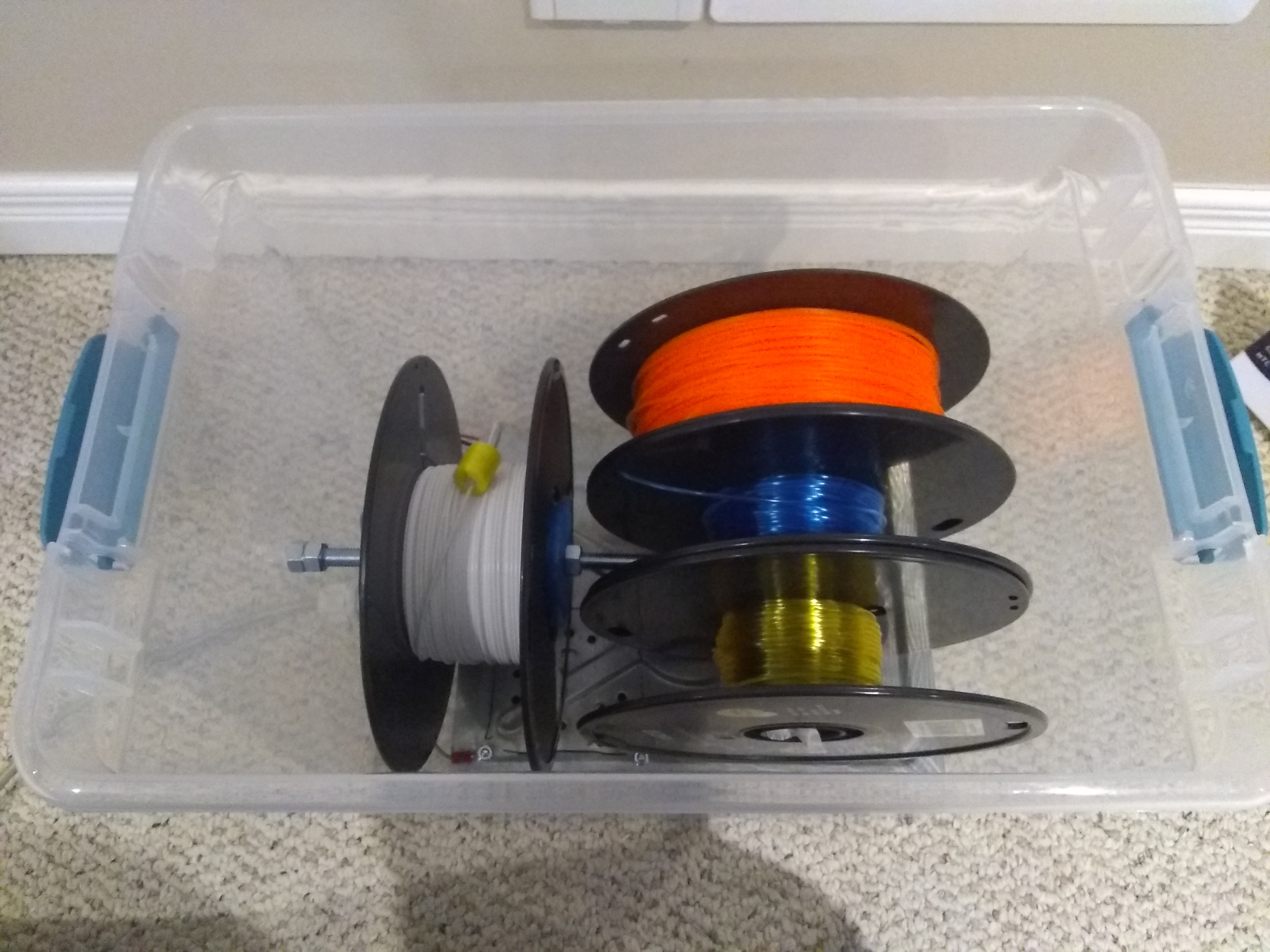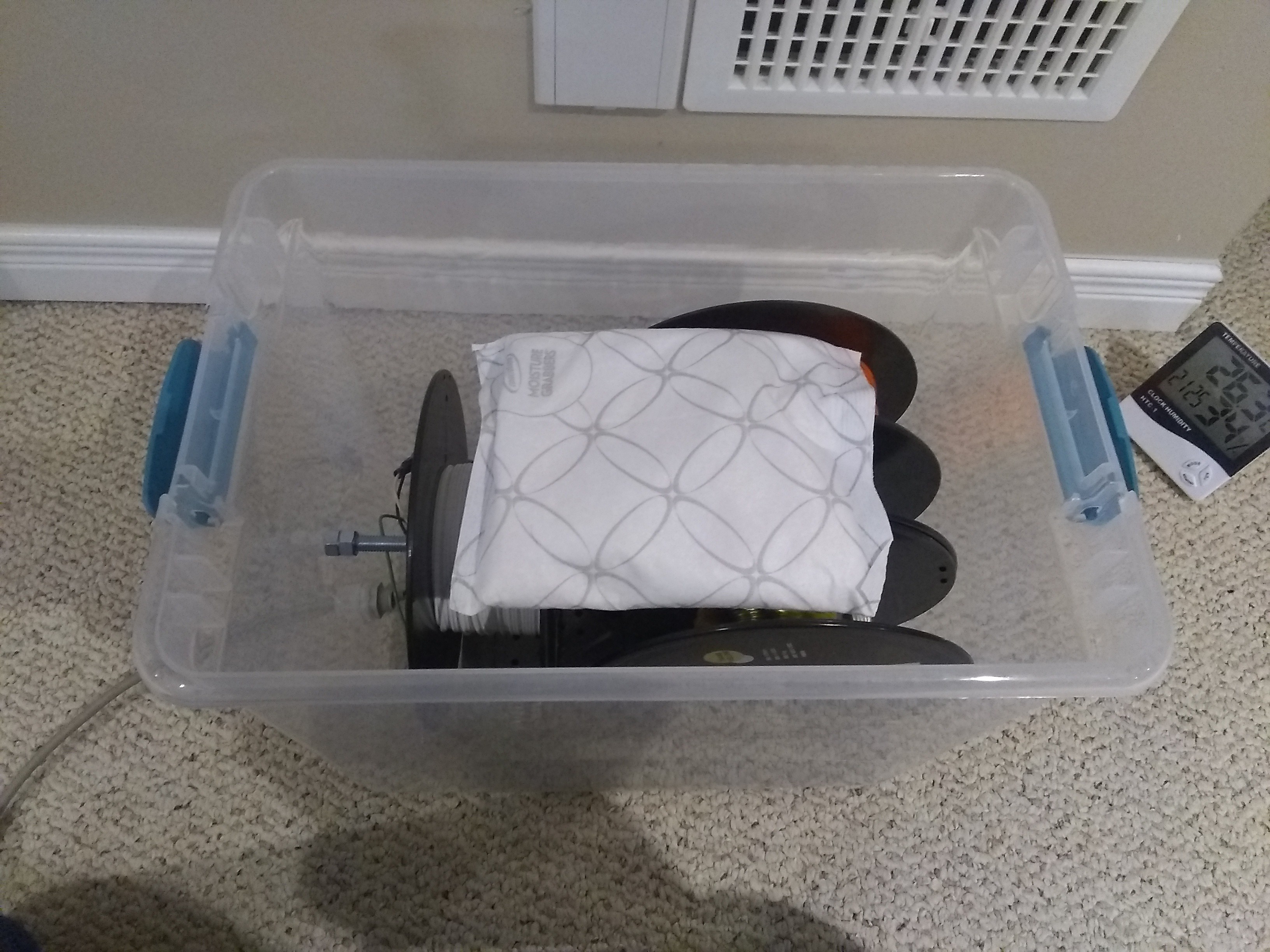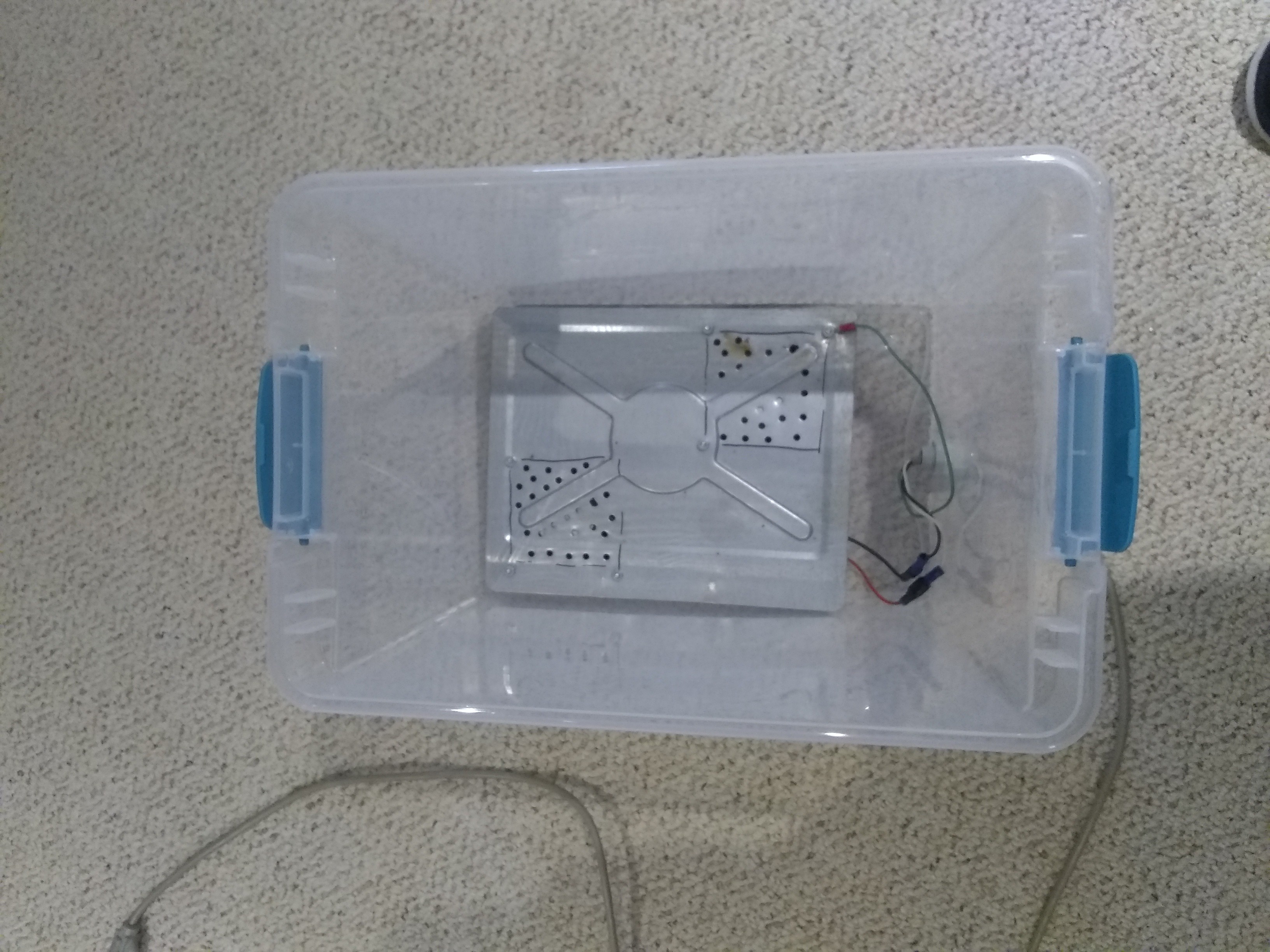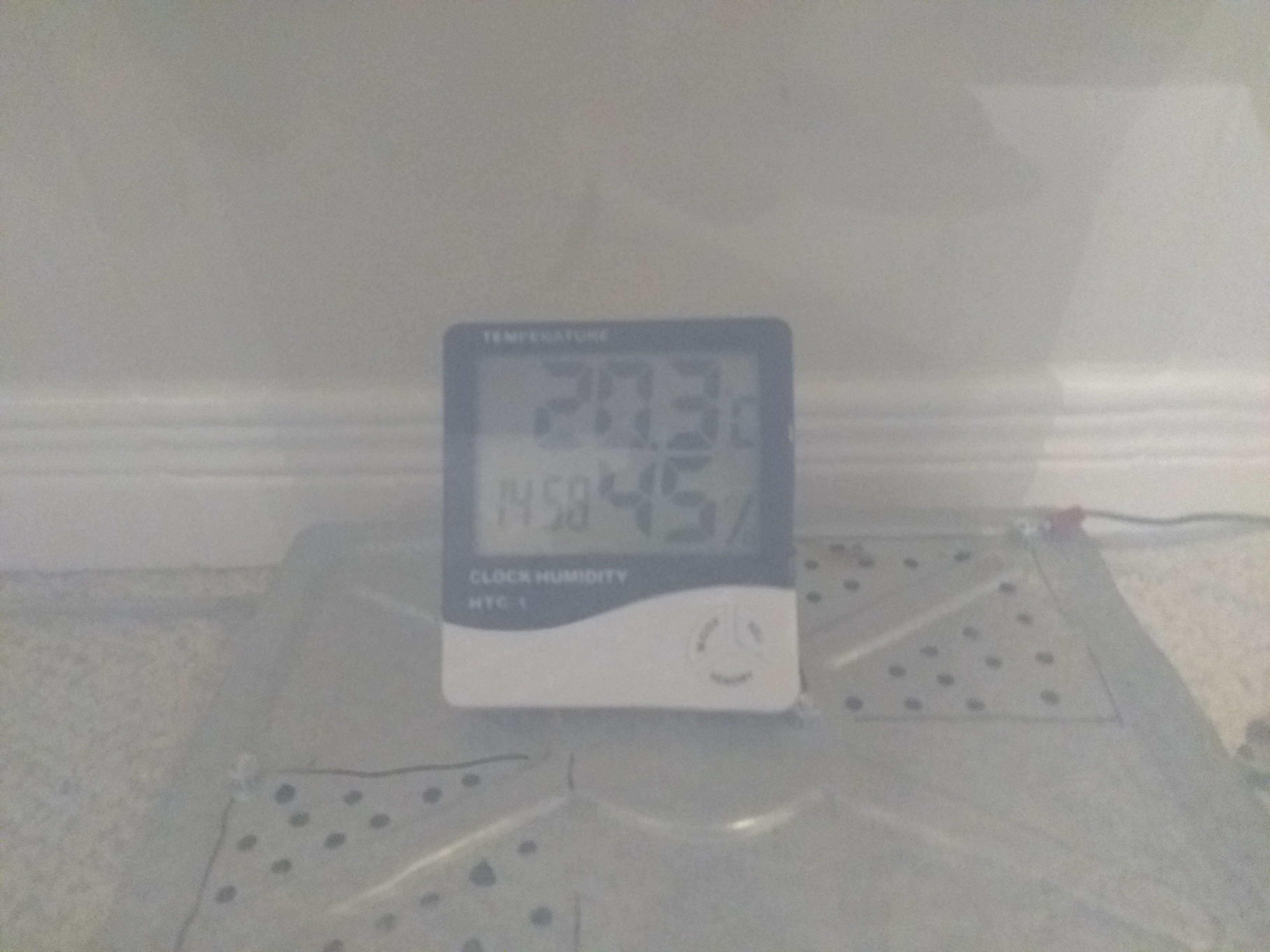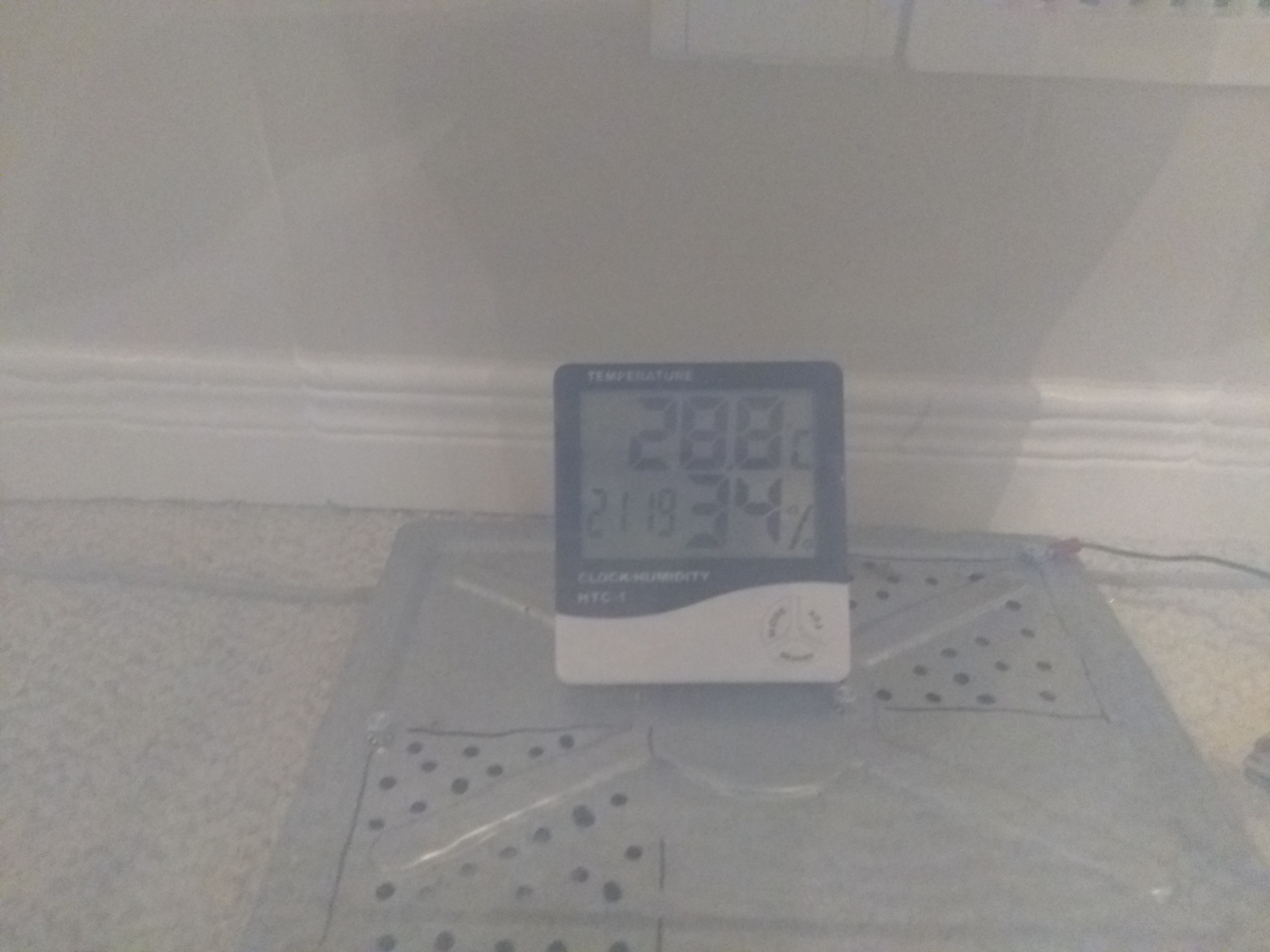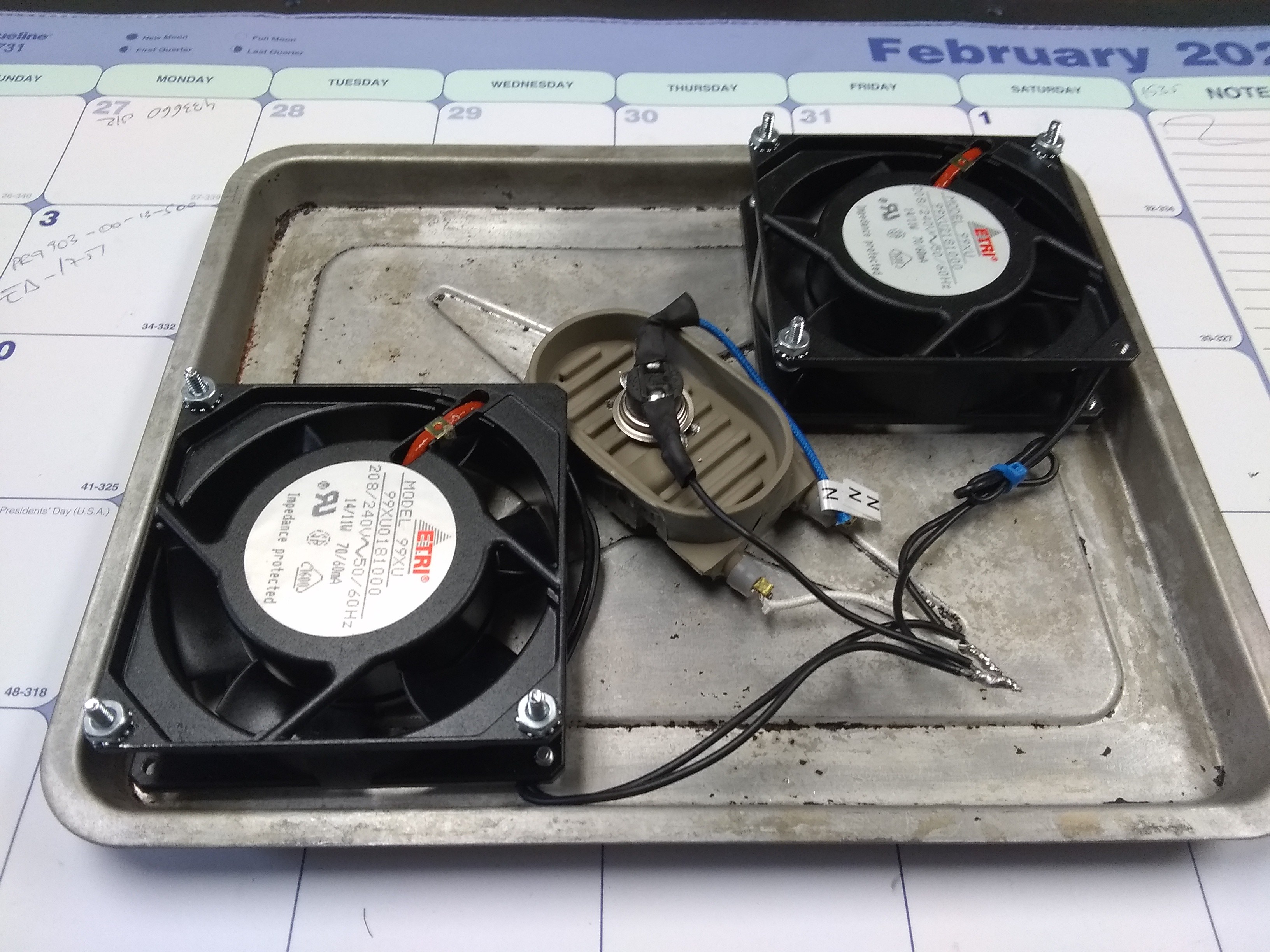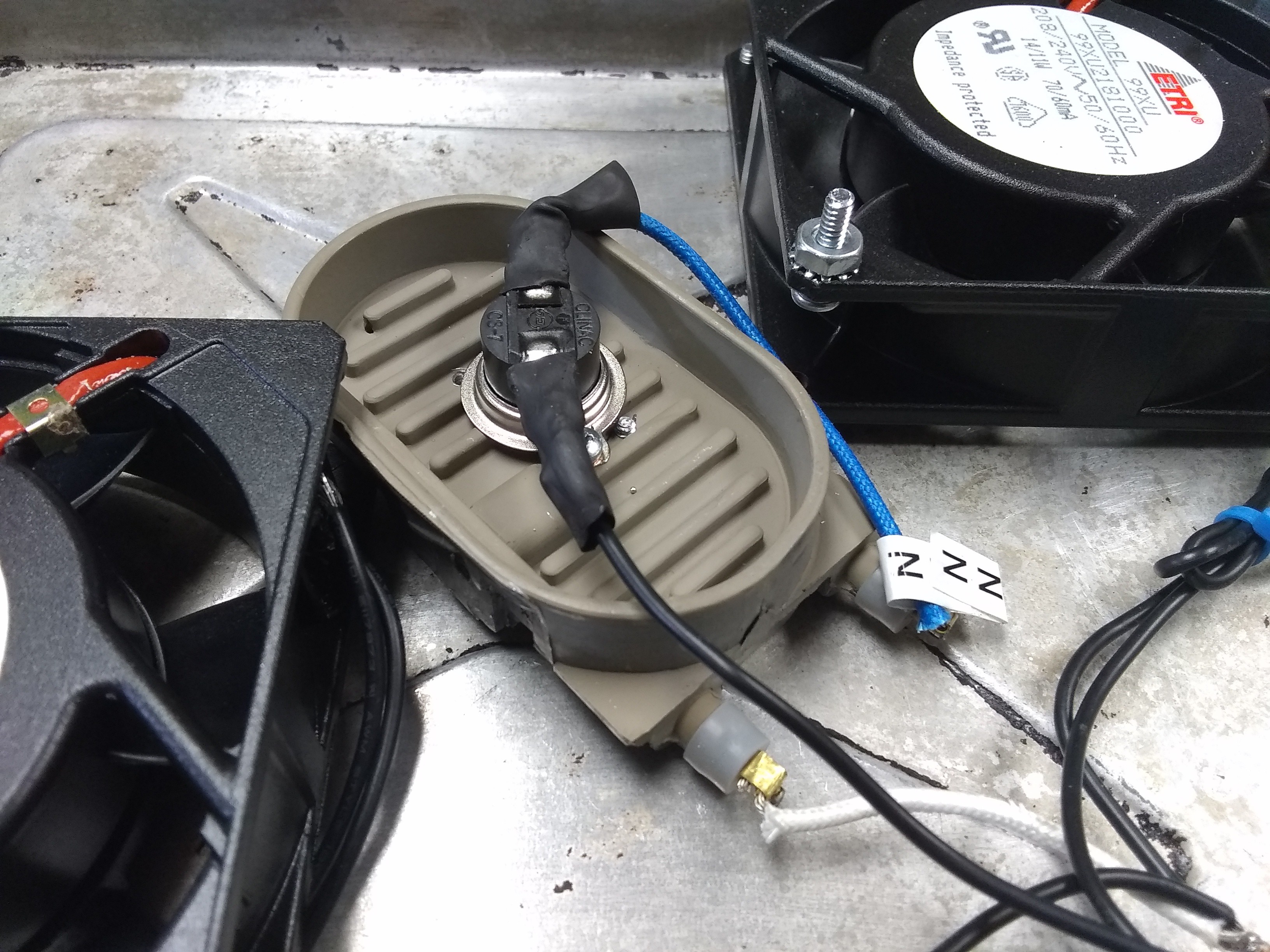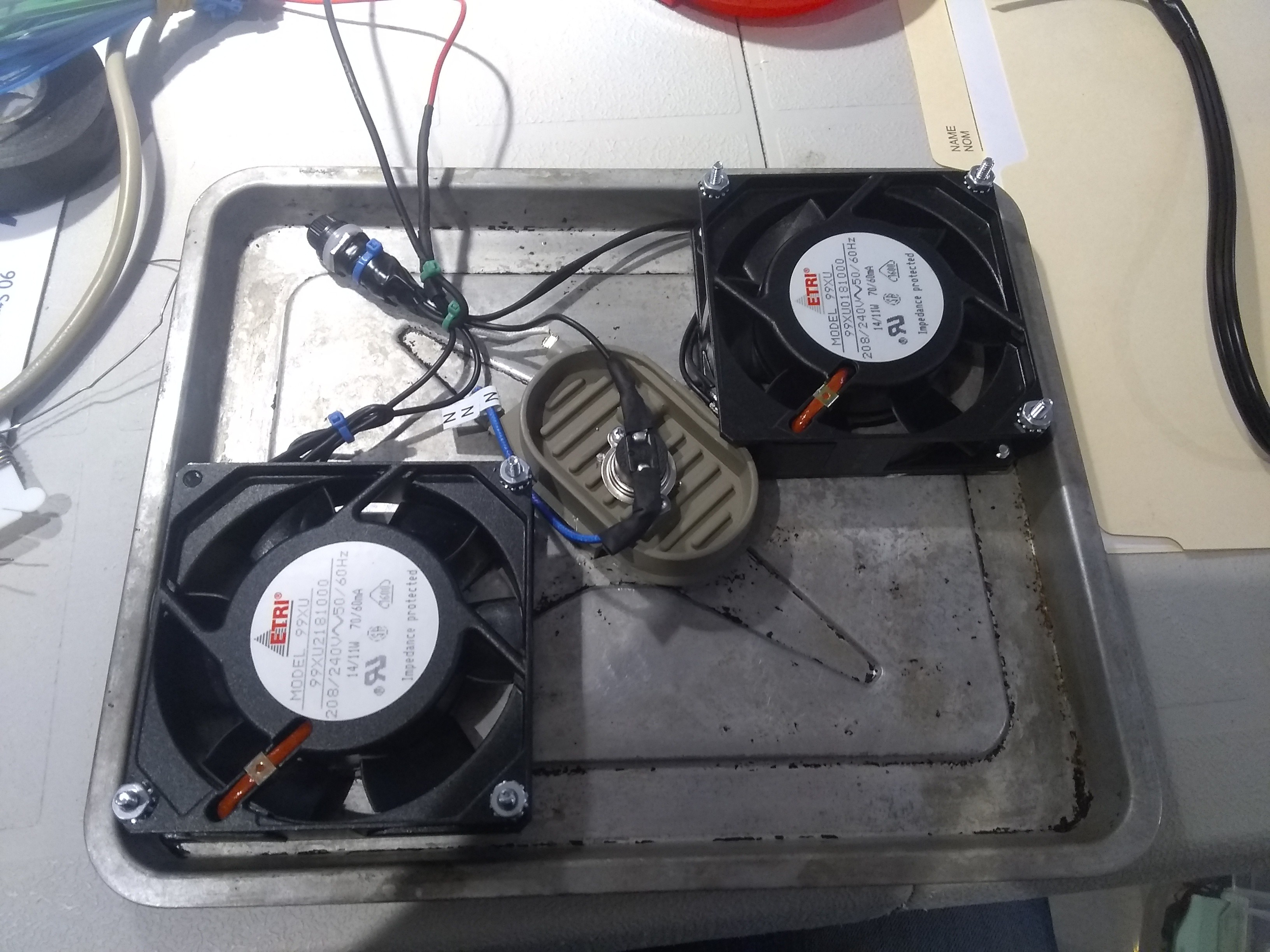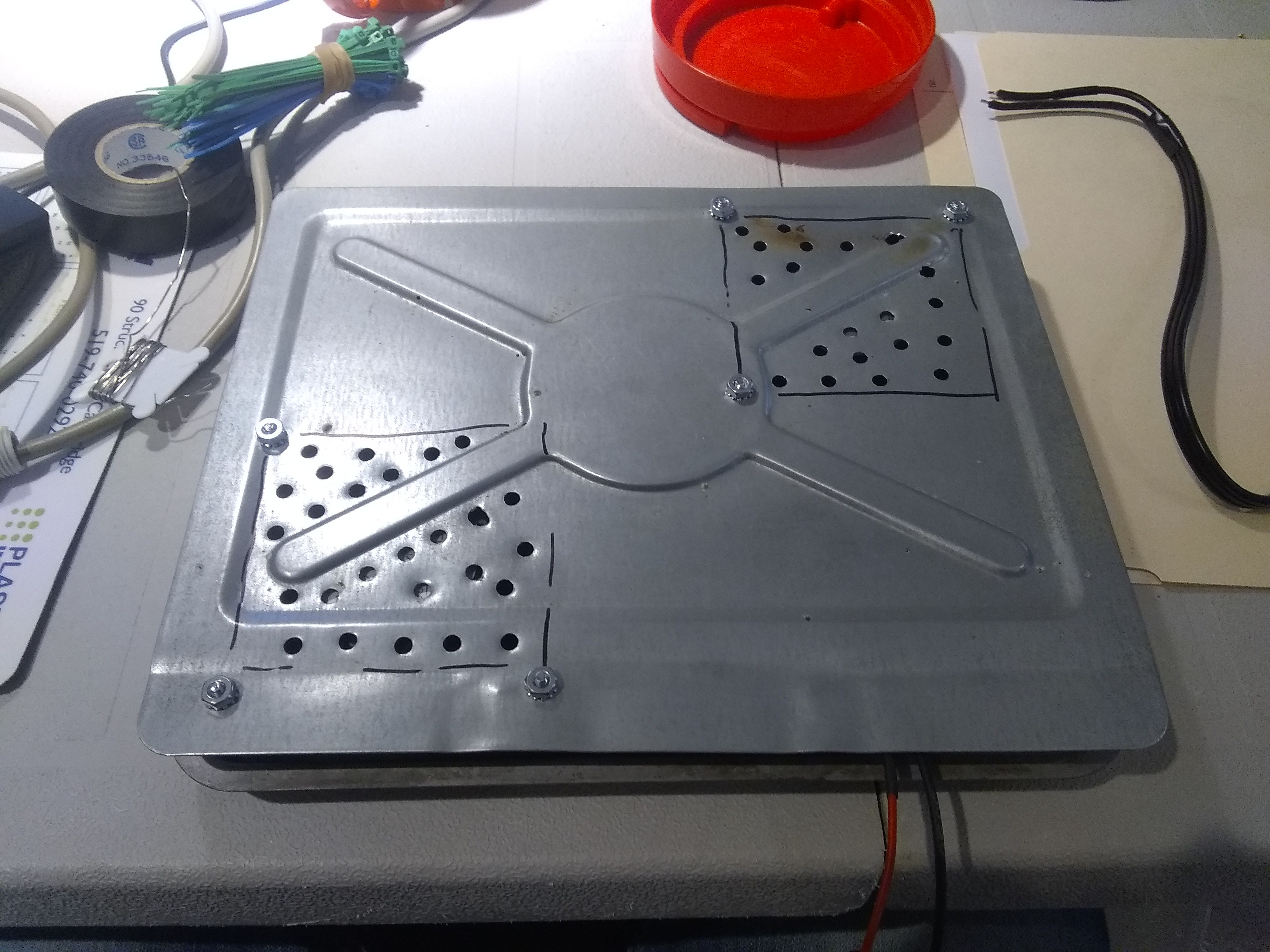I'd like to keep my filament for as long as possible, even the partial rolls.
Up to this point I would store them in a large zip-lock bag with a desiccant pack.
A few complaints about the zip-lock bags:
* Sometimes they develop holes that are not obvious.
* Filament becomes brittle quite fast.
* Zip lock bags are an eyesore piled up in a corner.
* You need a bag... can't find one.
* The status of the desiccant pack is unclear. Might be saturated.
This is my first attempt at the simplest storage solution I could muster up with stuff that I already had.
 TheGrim
TheGrim